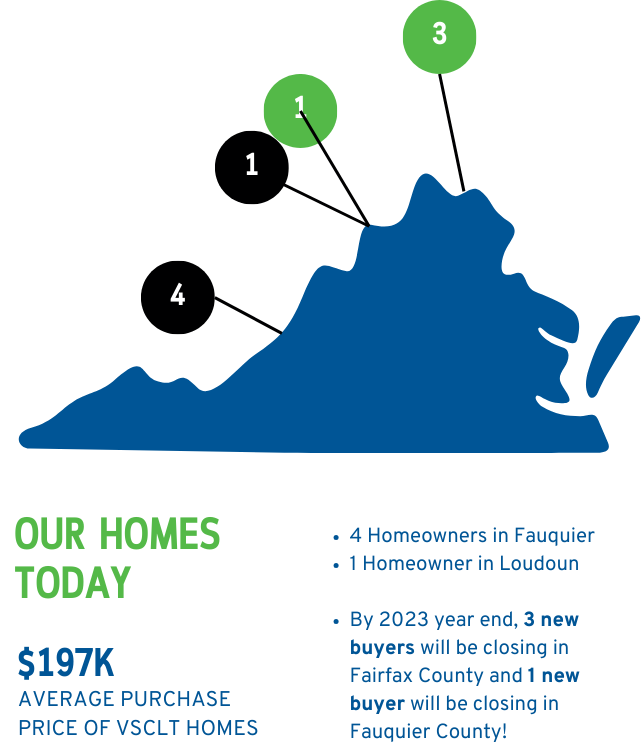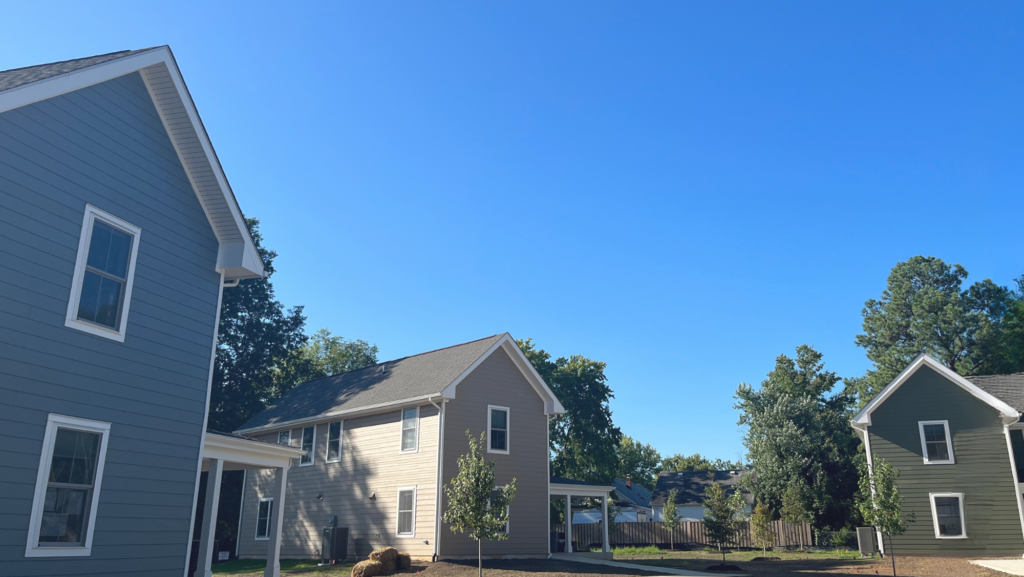The FWD #G30 • 603 Words
This blog has been adapted for HousingForward Virginia from a forthcoming APA Virginia news brief. Written by guest contributors from Virginia Statewide Community Land Trust, Jim Russell and Amelie Rives, with Maria Dougherty.
The Virginia Statewide Community Land Trust offers a broad approach to maintaining affordability amid changing population and housing market patterns.
Virginia’s communities are changing, affecting development patterns and housing affordability. Out-migration from some of the most expensive housing markets in the U.S., like New York City, displaces residents in Virginia’s gateway region, Northern Virginia. With limited housing stock across the state, displaced Northern Virginians then displace other residents in regions further afield through “cascading migration,” a process that began well before COVID. The pandemic and the wide adoption of remote work only accelerated this trend.

As evidenced by the accelerated growth in Virginia’s exurbs, Northern Virginia households are keeping their wealth and influence in Virginia when they move, continuing the cascade throughout the Commonwealth. The 2023 Virginia Population Estimates from the UVA Weldon Cooper Center confirm this phenomenon, showing the continued flow of migration out of major metro areas and into smaller cities and rural counties.
New Kent, Goochland, Louisa, and Caroline counties, all within an hour’s drive of Richmond, were the four fastest growing counties in Virginia over the past decade. The Winchester Metropolitan Area also saw in-migration from Northern Virginia at almost five times the rate of the rest of the state.

These statewide population changes ultimately have major effects on regional housing markets throughout Virginia:
“… Home prices in every Virginia county north of the James River, except Amherst, have risen faster than the rest of the country. […] Today, Arlington and Fairfax have the most expensive housing among all East Coast counties, after only Martha’s Vineyard and Nantucket.”
Hamilton Lombard, Weldon Cooper Center for Public Service at UVA.
What can stakeholders do to prepare exurban and rural places for cascading migration and tight housing markets? Community Land Trusts could be an answer.
A Community Land Trust (CLT) is a permanently affordable homeownership model. CLTs sell homes but retain ownership of the land underneath them. This removes the cost of the land from the home, ensuring a property is always sold affordably to income-qualified buyers. Homeowners agree to lease the land beneath their homes from the CLT. This allows the home to stay in the program permanently while homeowners gain equity on a limited basis, allowing for modest wealth generation while keeping the initial subsidy in the home to serve future income-qualified homebuyers.
CLTs help shelter communities from cascading migration patterns that impact housing markets by limiting the increase in value of CLT homes compared with market homes. Instead of moving to a new region to afford housing, CLTs allow neighbors to stay in their home region by reducing the cost of entry to homeownership and protecting that affordability over time.
Increasing the number of homes with permanent affordability in one community can counter the effects of gentrification and displacement even in Virginia’s border communities, like Bristol, which had the highest per-capita in-migration rate of the last four years.
There are five CLTs in Virginia, including the Virginia Statewide Community Land Trust (VSCLT), which operates statewide in urban, suburban and rural communities.

VSCLT’s approach recognizes that our unique communities and housing markets are interrelated, and that community land trusts can serve as systemic and regional affordability anchors amid changing population and housing dynamics.
VSCLT’s experience and understanding of these patterns is backed up through academic research showing that CLT housing units can stabilize housing prices and reduce displacement. The future of housing in Virginia’s changing communities is dependent on lasting affordability, protecting homeownership for our current and future neighbors. To hear more about VSCLT check out this episode of PBS’s documentary series on rural life, Life in the Heart Land.
Amelie Rives, MURP, serves as the Chief Executive Officer for the Virginia Statewide Community Land Trust through her work as a Senior Associate at HDAdvisors. Jim Russell is a geographer who specializes in the economic revitalization of U.S. cities and is the Chair of VSCLT’s Board of Directors. Maria Enriquez Dougherty, MURP, is also a Senior Associate at HDAdvisors, serving VSCLT as the Director of Programs and Policy and Housing Forward Virginia.
